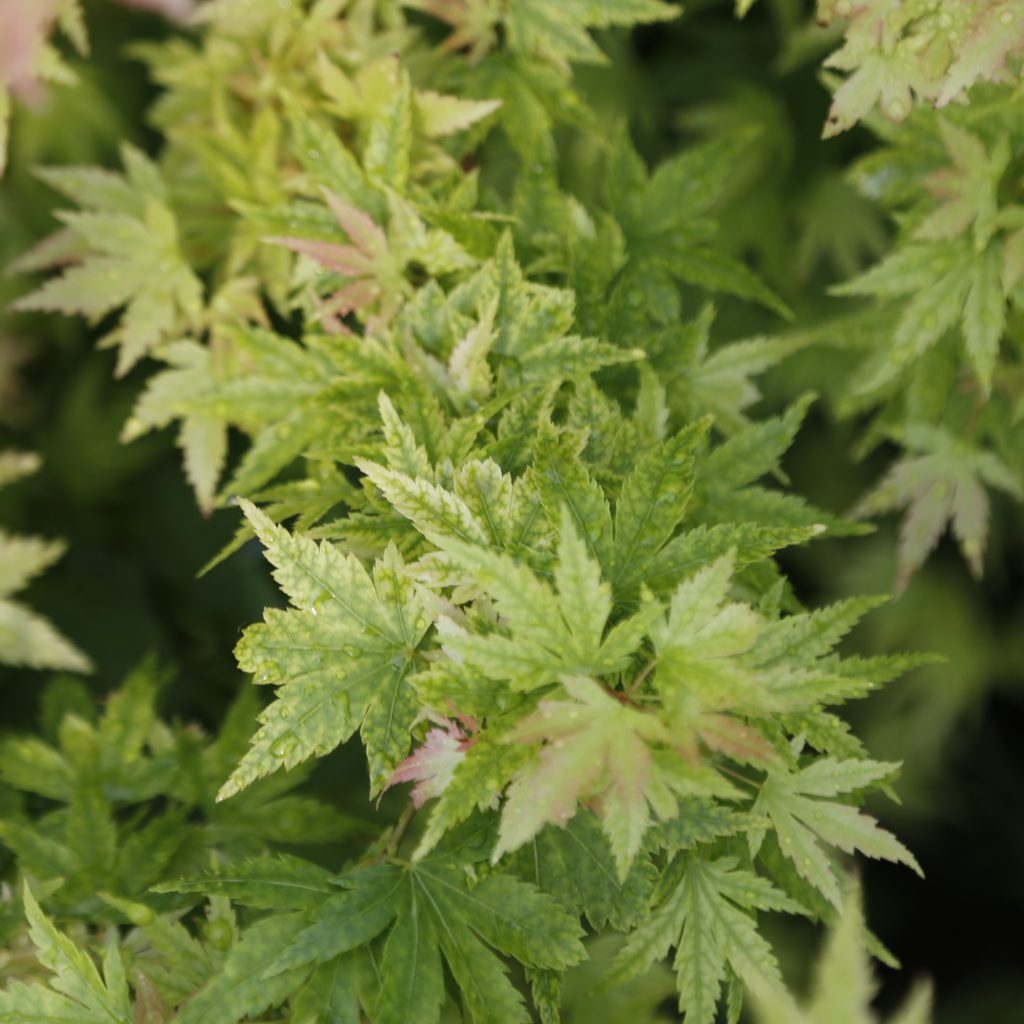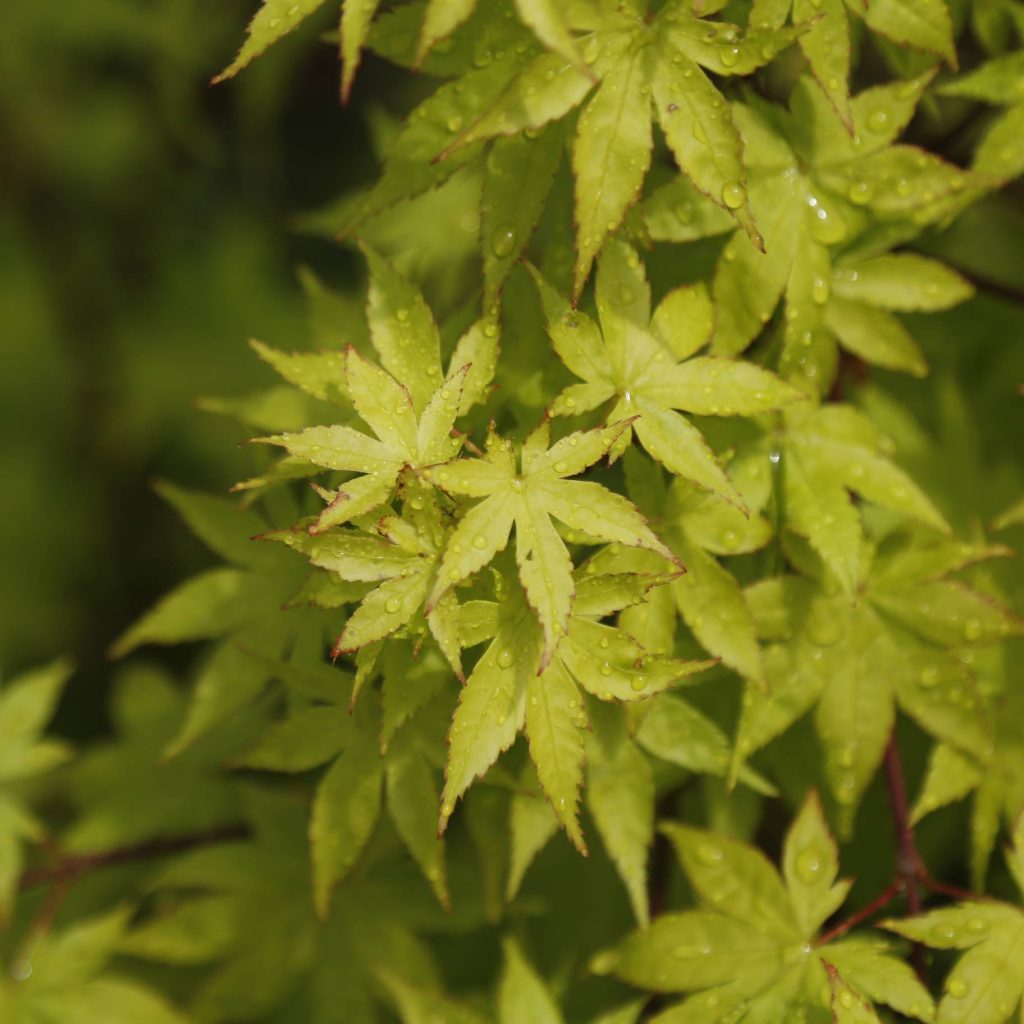Maple trees are renowned for their vibrant fall foliage and versatile uses in landscapes. They come in various sizes, each offering unique characteristics and benefits. Understanding the differences between smaller, medium-sized, and large maples can help you select the best type for your garden or landscape. Here’s a look at each category and some popular species within them.
Popular Smaller Maples
1.1 Japanese Maple (Acer palmatum)
Description: Japanese Maples are renowned for their delicate, lacy leaves and striking fall colors. They typically reach a height of 6 to 10 feet, making them ideal for smaller gardens or as accent plants.
Features: Their foliage comes in various colors, including red, green, and purple. They often have a graceful, weeping form that adds elegance to any landscape.
Uses: Perfect for bonsai, container planting, or as a focal point in small gardens.
1.2 Dwarf Boxelder (Acer negundo ‘Flamingo’)
Description: The Dwarf Boxelder is a compact version of the common boxelder, reaching about 8 to 12 feet in height. It has attractive variegated foliage with pink and green hues.
Features: Its unique color variations and small size make it a standout in smaller spaces.
Uses: Ideal for small gardens or as a decorative plant in urban settings.
1.3 Red Dragon Maple (Acer palmatum ‘Red Dragon’)
Description: This cultivar of the Japanese Maple is known for its stunning red leaves that turn deep burgundy in the fall. It typically grows to about 4 to 6 feet in height.
Features: Its compact size and vibrant color make it an excellent choice for adding a splash of color to small gardens or containers.
Uses: Perfect for adding color to garden beds or enhancing the look of patios and balconies.
Medium-Sized Maples
2.1 Silver Maple (Acer saccharinum)
Description: Silver Maples are medium-sized trees that grow between 50 and 70 feet tall. They are valued for their rapid growth and distinctive silver undersides of the leaves.
Features: The tree’s broad canopy provides excellent shade, and its attractive leaf color can brighten up the landscape.
Uses: Ideal for larger gardens, parks, and as a street tree due to its fast growth and shade-providing abilities.
2.2 Sugar Maple (Acer saccharum)
Description: Sugar Maples are well-known for their beautiful fall color, ranging from bright yellow to deep red. They generally grow between 40 and 60 feet in height.
Features: The tree is also famous for its sap, which is used to produce maple syrup.
Uses: Excellent for medium to large gardens where a stunning fall display is desired, and also beneficial for those interested in producing their own maple syrup.
2.3 Amur Maple (Acer ginnala)
Description: The Amur Maple is a deciduous shrub or small tree that typically grows to about 15 to 20 feet tall. It is known for its attractive red fall color and compact size.
Features: Its dense foliage and vibrant color make it a popular choice for adding visual interest to medium-sized gardens.
Uses: Great for use as a small shade tree or as a colorful hedge in residential landscapes.
Large Maples
3.1 Red Maple (Acer rubrum)
Description: Red Maples are large trees that can reach heights of 40 to 60 feet. They are appreciated for their vibrant red fall color and their adaptability to a variety of soil conditions.
Features: The Red Maple has a wide, spreading canopy and is known for its striking red leaves in autumn.
Uses: Ideal for large landscapes, parks, and as a shade tree in urban and suburban environments.
3.2 Norway Maple (Acer platanoides)
Description: Norway Maples are robust trees that grow up to 50 feet tall. They are valued for their dense canopy and strong structure.
Features: The tree provides excellent shade and has a vibrant green color that turns yellow in the fall.
Uses: Suitable for large gardens, city streets, and areas requiring a sturdy, reliable shade tree.
3.3 Silver Maple (Acer saccharinum)
Description: Silver Maples can reach up to 70 feet in height and are known for their rapid growth and striking silver-backed leaves.
Features: The tree’s broad canopy provides significant shade, and its fast growth makes it a good choice for quick coverage.
Uses: Best suited for larger spaces where quick shade and substantial canopy coverage are desired.
Conclusion
Selecting the right maple tree depends on the size of your space and the aesthetic you wish to achieve. Smaller maples like the Japanese Maple offer elegance and color for compact areas, medium-sized maples such as the Sugar Maple provide beautiful fall color and practical benefits, while large maples like the Red Maple are perfect for expansive landscapes requiring substantial shade and visual impact. Understanding the characteristics of each type will help you make an informed choice for your garden or landscape, ensuring a stunning and functional addition to your outdoor space.




